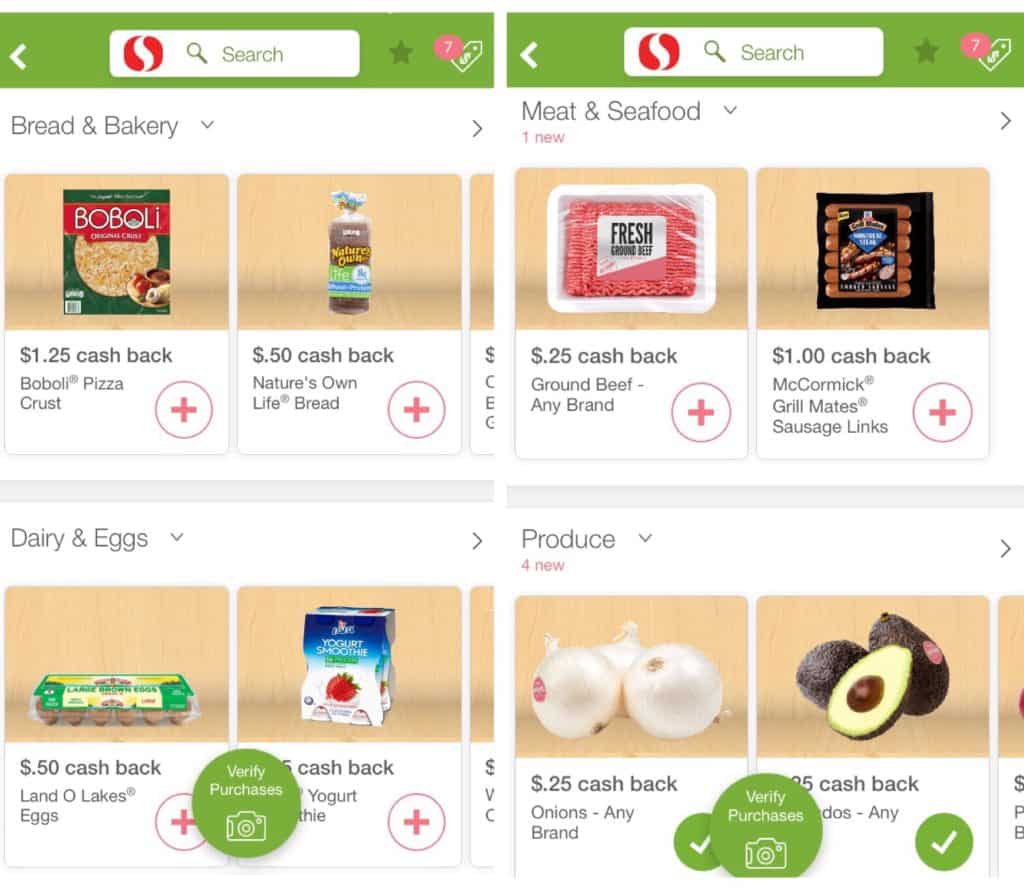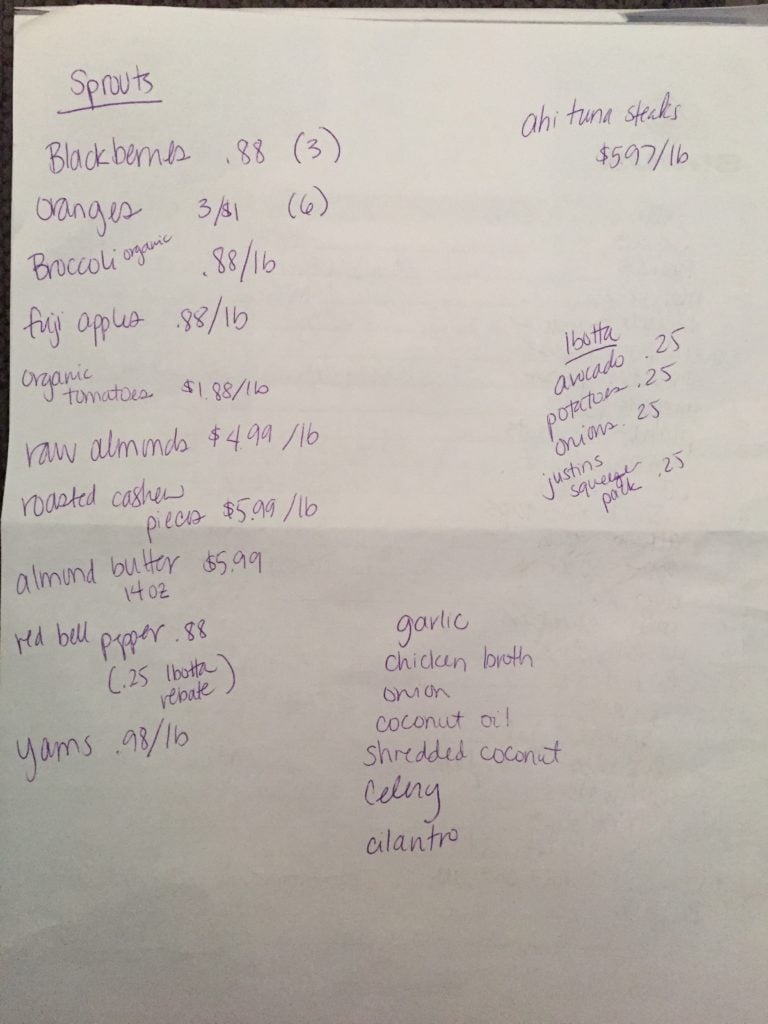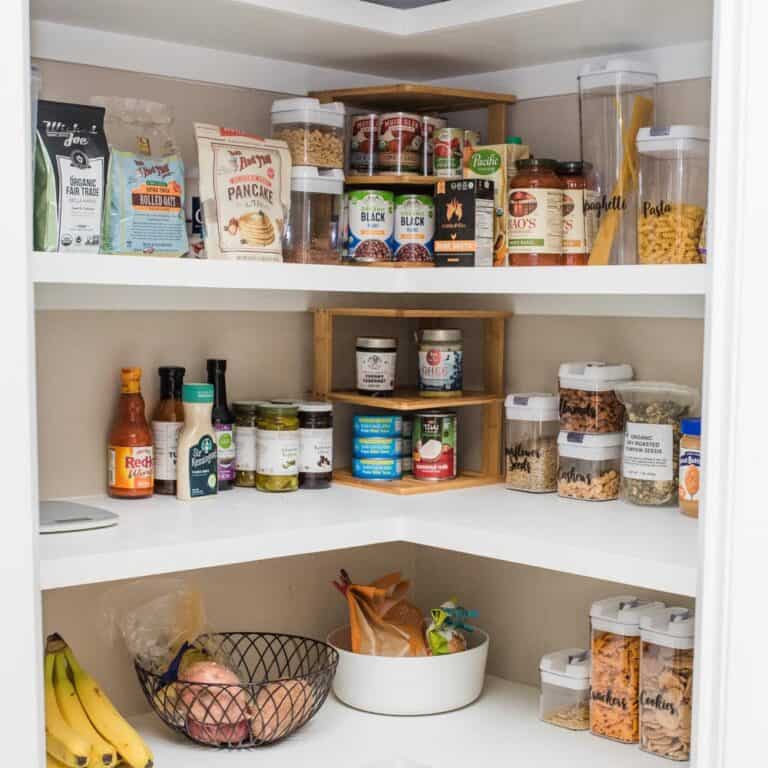How to Eat Clean on a Budget | Practical Tips
“I can’t afford to eat clean. It’s too expensive!” Oh really? I think I might be able to help with that. Here I’ll explain how to eat clean on a budget – and how our family does it.
When you walk around the grocery store and look at the healthier, cleaner foods, it may seem more expensive. Certified organic products usually are more expensive when compared to the non-organic foods. However, there are reasons for that.
- People generally buy the non-organic products, so those are offered at a lower price to meet the customer demand.
- Organic produce and other products are created at a lower volume, resulting in higher production costs.
- It costs to get organic certification, and that cost is passed on to the consumer.
Organic milk and organic eggs are considerably more expensive than their non-organic counterparts. It can be a difficult pill to swallow, but if you read about why you are better off buying organic milk and eggs, you may find that a couple extra dollars more is worth it.
Or you may decide to switch to non-GMO almond milk like I did. It’s even higher in calcium! And really — if eating clean and wholesome foods equals better health, think of all the money you will be saving on medical bills. Worth it.
This post may contain affiliate links. If you make a purchase, I may earn a small commission at no extra cost to you. As an Amazon Associate, I earn from qualifying purchases. Read more about these links in my disclosure policy.
So How Can You Spend Less on Healthy Foods?
So we’ve established that buying clean, organic food has a higher price tag in the grocery store. We have no argument there.
But did you know that by buying only clean foods, you will most likely still spend the same amount on food – or maybe even come out spending LESS on groceries each month?!!
Let me explain.
When you buy those inexpensive snacks, treats, munchy things that everyone loves, you may be spending less than you would on a bag of fruit or some organic greek yogurt.
But what happens after you eat that snack?
It’s not very nutritious, it probably has a good bit of sugar in it, and it’s going to leave you feeling unsatisfied.
You’re still going to be hungry afterwards!
So then you find something else to eat. Even the ingredients in diet soda (helloooo aspertame!) affect your body in such a way that it makes you think you are hungry, prompting you to eat MORE.
Yes, I can get a box of macaroni and cheese for $.50 each. Yes, I can get a packet of ramen noodles for about $.20. And I can get a junior bacon cheeseburger from Wendy’s for $1.00 (or I could in college…and a cup of water for free, because that’s all I could afford).
But it is possible to eat healthy snack options and nutritious foods without spending a lot of money.
Still not sold? Let me show you the data.
Everyone loves proof, right?
This is a chart where I compared how much I spent on groceries and eating out in February and March. In February, I was using LOTS of coupons to try to save money at the grocery store.
We were on a tight budget and I wanted to get our food bill as low as possible.
I saved $50 on one trip to the commissary, cutting my bill down from $200 to $150! I bought quick, cheap, easy meal items and snacks. There were healthy things in there, don’t get me wrong.
But I was more interested in saving money in our food budget than being healthy. And you see all the times I stopped for fast food?
Yeah. That’s embarrassing.
But…we drive to visit my husband 5 hours away at least once a month, and we do a lot of stops along the way. We also sometimes grab a quick snack meal between H’s dance classes on Mondays.
I didn’t plan to do anything healthier. 🙁
Then look at March. My decision to cut out all of this unhealthy eating happened on the weekend of March 9. That weekend, H and I took another big commissary trip, and this time we read food labels.
We bought cereals with whole grains that were healthier, we bought whole foods, and we left ALL of the unhealthy foods and impulse buys at the store. No junk food.
I bought store brands with things like tomato sauce and olive oil. Many times, generic brands are just as good as name brands (and often are the exact same product). You can save so much money buy going with store brand products!
I still used coupons where I could, and we still only spent $150.
(Understand that we use the commissary to stock up on pet food, household items, and the like since we only go there monthly. That’s why our bill is pretty high.)
Even though March isn’t yet over, and there is still a week left in the month, you can see that what I’ve spent on food so far this month is $159 less than what I spent in February!!
How to Eat Clean on a Budget
Updated January 2017

Step 1: Look at foods on sale
Yes, the macaroni is on sale. I see that. Just pretend it isn’t there.
Like you, I see a food that my kids like and I see that I can get two boxes of yellow cheesy deliciousness for just $1, but I know it isn’t going to do them any favors to eat processed foods. So I ignore it and look at the fresh produce and fresh meats that are on sale instead.
I try to buy produce that is in season, since it will typically be what is cheaper. Local produce is even better.
And with meats, I try to buy in bulk when there’s a good sale. If I can get chicken breasts for $.99 per pound, I’m going to buy more than we need so that we can eat at that price until it goes on sale again.
You can also save in the long run by buying a whole chicken and using it for multiple meals, plus saving and using the chicken stock.
Reducing food waste is one of the best tips I can give to lower your grocery budget while also being eco-friendly!
Read more about reducing food waste here!
Step 2: Make a meal plan
Based on the foods that are on sale (that I know my family will eat), I make a healthy meal plan.
We tend to eat a lot of the same things – chicken cooked various ways, hamburgers, spaghetti, some soups or salads, tacos – so my mind usually thinks of those meals first. I typically only plan our dinners, since breakfast and lunches are pretty individualized to each family member.
And a lot of times, our lunches consist of leftovers anyway.
So planning out dinners for at least 5 nights per week will get us through.
Don’t miss my Clean Eating for Beginners post here, and get your printable clean eating checklist!
Step 3: Look for additional savings
I wouldn’t call myself a huge coupon queen, although I have some friends who are great at it. They know how to stack a store coupon, a manufacturer coupon, a gift card, and get a gift card in return (like at Target) and they can pretty much do it with their eyes closed.
Not me.
I’d love to, and I try to learn, but I’m just not there yet. I do look for coupons when I can, although there aren’t a lot of coupons for produce. (They do exist though, you just have to find them.)
You can check company websites, the Sunday paper, and even email companies and ask for coupons. Yogurts and other dairy items are good for this, along with frozen veggies, nut butters, pantry staples like pasta or rice, lunch meats, bread, etc.
Just make sure to compare the prices of the coupon items to the store brand or other brands. Sometimes even with a coupon, you pay more!

One thing I like to use is an app called ibotta. It’s a rebate app that gives you cash back on products that you buy. I always check to see if there’s a rebate for something on my list, and there usually is. They have rebates for all kinds of items, including some produce.
(If you click on my referral link above, you get $10 for joining and I get $5. Win win!)
So far I’ve gotten back about $150 since I started using ibotta, and I have almost $50 waiting to be cashed out to my PayPal account. I like to save up and use my rebates for my own spending money, or to buy Christmas gifts at the end of the year.
In college and need help food shopping? Check out the best grocery list for college students!
Here’s how I do clean eating on a budget
The easiest way for me to be able to show you (and my husband) how this works, is to show you my personal experience of how I do it each week. So for this family of 5 + a dog, here is my healthy eating plan and our expenses for week 1:
I checked the Sprouts sale paper because it has the best prices on produce. I wrote down all of the items that looked to have a good price, along with a few other things we needed. I also checked my ibotta app to see what had rebates available.
Sweet potatoes are a great way to bulk up healthy meals with a lot of expense. Grabbing some nuts and a piece of fruit is perfect for an after school snack without having a ton of added sugar. And peanut butter or almond butter with apple slices is always a good idea for a nighttime snack (for me, haha).

Then I looked through my Safeway and King Soopers (our local grocery store version of Kroger) papers to compare prices on meats, since they are usually a better price than Sprouts. (I know grass-fed organic meat is best, but I also have a budget to stick to — and a husband to live with. I do my best.)
I wrote down chicken breast ($1.49/lb), canned green beans, canned salmon, and sandwich meat. I thought of a few dinner ideas I could make with the produce, the meat, and what I knew we had on hand at home, and made a rough menu.

Then I went shopping. I bought what I needed at Sprouts on Monday, then got the rest of the food at Safeway the next day (it’s right next to K’s karate studio so it’s easy to shop while he has class).
I ended up spending $60.51 at Sprouts and $48.64 at Safeway — there were a few things that I grabbed that weren’t on my list, but they were needed and were at a good price.
There were also a few things on my list that I didn’t get (Sprouts was out of ahi tuna, and I couldn’t find the almond butter), so it probably evened out.
Week 1 Total Spent: $109.15
ibotta rebates: $1.00
Net Cost: $108.15
Not too bad for my first week, although I think I can do even better next time. The good thing is that we still have a lot of chicken for dinners next week, so I won’t need to buy that again unless the sale price drops even more.
See how we organize our pantry for clean eating here!
One thing we didn’t eat this week was hamburgers on Thursday, as I just wasn’t feeling it. Sometimes we fall back on sandwiches or random stuff in the fridge. It happens.
And tonight’s plan is going to be adjusted since the ahi tuna was sold out at Sprouts. I think I may do a veggie stir fry instead, with a little chicken tossed in.
Or maybe we will have brinner, which is always a hit. Who knows?
But it will be a nutritious, healthy meal for my little family. Made with love.
Want more clean eating meal plan ideas? Click here!
Conclusion
So…is it really so expensive to eat clean and organic? Not really, if you take the time to do a little planning before grocery shopping.
And the cool thing is, if you are a couponer – you can still find good coupons!!!
I find coupons for Silk Almond milk on occasion, I get coupons for yogurt (check out Chobani’s website, or friend them on Facebook), and about once a month I find coupons for produce items like Cuties oranges, POM pomegranates, packages of cherry tomatoes, or nuts.
There ARE coupons for healthier foods out there, you just have to look for them.
Or email the companies and ask! I’ve gotten coupons from Bob’s Red Mill and other companies just for shooting out a quick email and asking for them. It’s worth a shot.
Will you take the challenge? Will you spend a month eating only healthy options and compare it to your previous budget and see how much you’ve saved?
I’m not even finished challenging myself.
I will finish out next in the same way, and then see how well I can do with a whole 30 days of eating clean!! My goal is to keep it all under $500. Let’s do it!

MEET AMANDA
Amanda is a mom of 4 living a mostly crunchy lifestyle outside of Atlanta, GA with her husband, 2 dogs, and a cat. As a former special education teacher who also has her personal training certification — Amanda really enjoys teaching others how to do things!
When she’s not working, Amanda enjoys DIY projects, exercising, photography, hiking, and long walks through Target.






